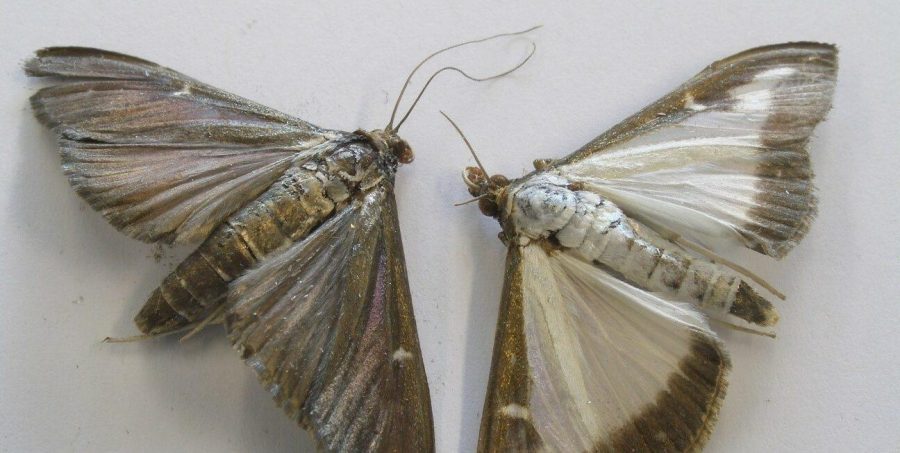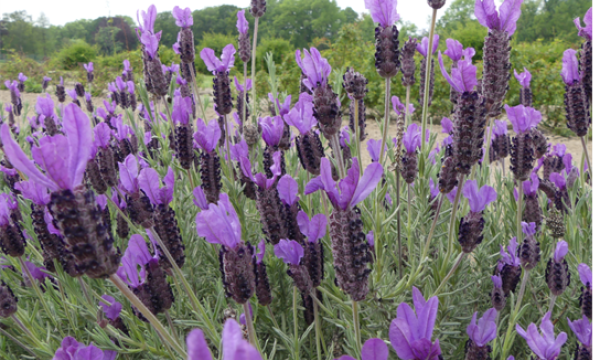Project news Plant attacker for April: the box moth

By now nearly everyone has heard of the box moth (Cydalima perspectalis). This pest came from East Asia and was accidentally introduced into Europe (via southwest Germany) in 2006. The source was most likely wooden packaging containing eggs or caterpillars. The boxwood moth reached Belgium in 2010 and spread quickly throughout the country. The rapid spread is mainly due to the transport of infested boxwood plants, but the moth can also glide well, which allows the populations to travel 7 to 10 km per year.
Adult moths can sometimes be observed during the day. As with all butterfly and moth species, the life cycle goes through the following stages: egg, caterpillar and butterfly (moth). The time at which these phases occur is fairly well known. Weather conditions, especially temperature, can cause small variations.
The wings of the box moth are bright white with a brown border (Figure 1). The body is also white with a brown head and brown abdomen. There is a rare variant that is completely brown. From tip to tip the moth is about 4 cm wide.
Young caterpillars are a dirty yellow color and are difficult to see. Older caterpillars have a black head and a bright green body with a pattern of black dots and black and light longitudinal stripes (Figure 2). They shed their skin five to six times. A fully-grown caterpillar is 4 cm long and hides inside the box plant.

Figure 2. Full-grown caterpillar of the box moth (4 cm) with typical color patterning
Only the caterpillars of the box moth can damage box plants. The early damage is almost invisible. Newly-hatched small caterpillars live on the underside of the box leaves, where they scrape away the leaf pulp. From above, it looks as if the leaves are decorated with capricious line patterns. Because the caterpillars are small, the damage is rather limited and is not so conspicuous. The damage becomes more and more noticeable as the caterpillars grow. They eat ever larger bites from the edge of the leaf until only a skeleton of the leaf remains. After a few days, the entire twig will be bare with bundles of dead leaves spun together. Also visible is the gray-green excrement of the caterpillars, as well as the remains of the molted caterpillars and the pupae. When occurring in large numbers, the caterpillars can eat an entire plant bare. The boxwood temporarily loses its ornamental value but does not die from it. After all, boxwood is a strong plant! Still, it is better to avoid damage if possible.
The caterpillars feed only on boxwood, regardless of the variety, but they will not damage any other plant species. The moths can be found on all kinds of plants, but they only feed on the nectar of the flowers.
When good pest control is applied, the box moth can be controlled and a fresh looking boxwood bush can be guaranteed. Tackle the pest when you see caterpillars appearing in April, July and September. All information about recognizing pests and damage and about controlling box moth caterpillars can be found on SOS Buxusmot | Buxusmot (website in Dutch). This website supports the research project 'Raising awareness about monitoring and control of box moth (Cydalima perspectalis) in Flanders', financially supported by the Fund for Agriculture and Fisheries (Flanders Government) and carried out by ILVO, PCS and Landelijke Gilden.


